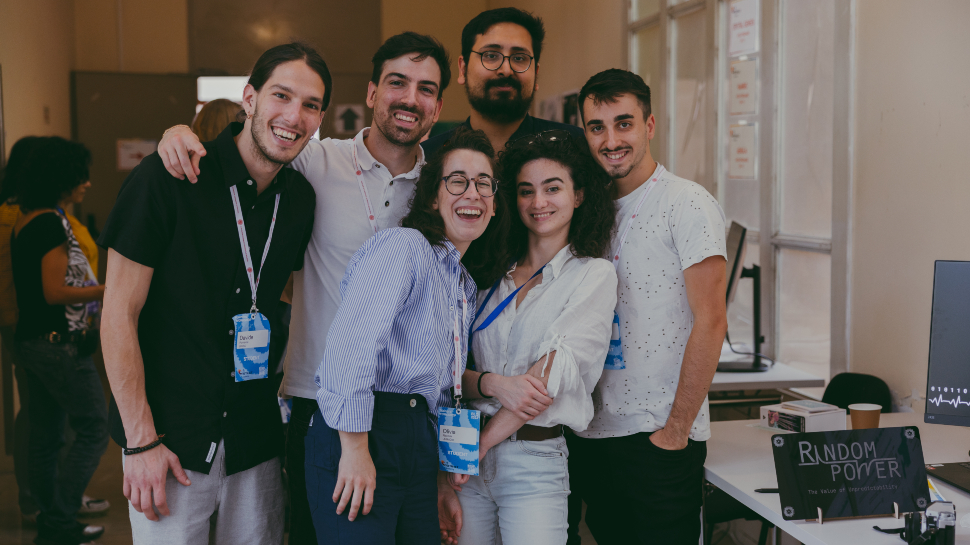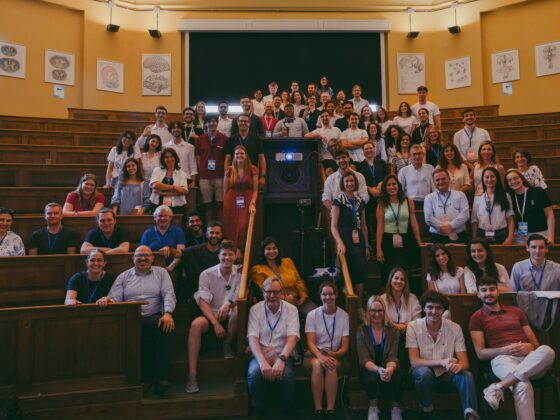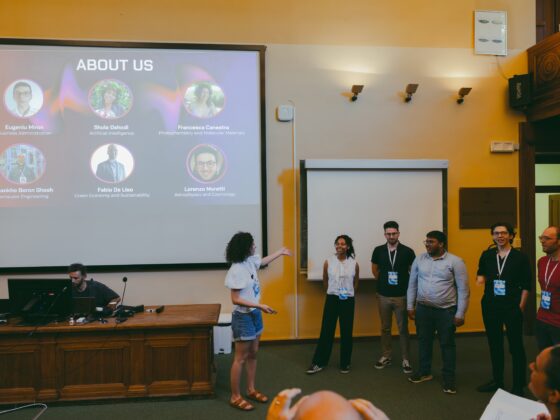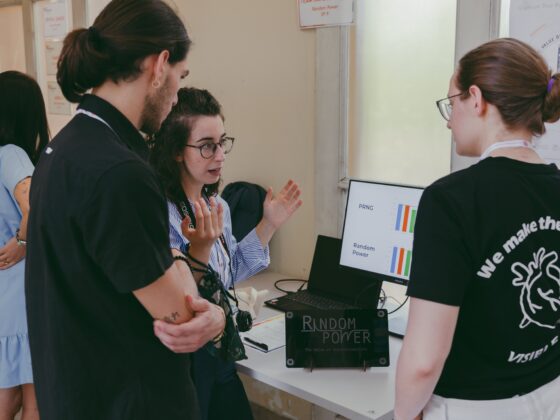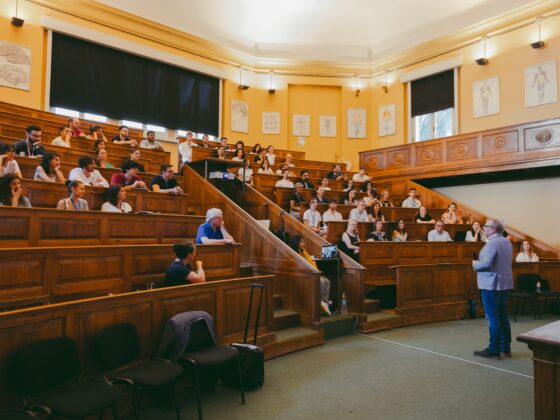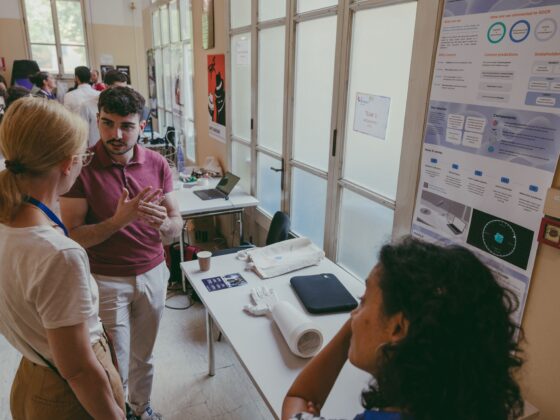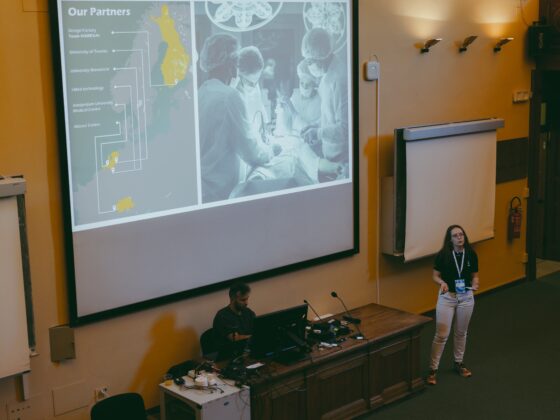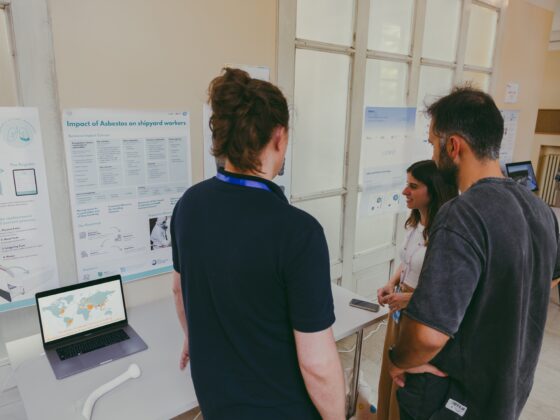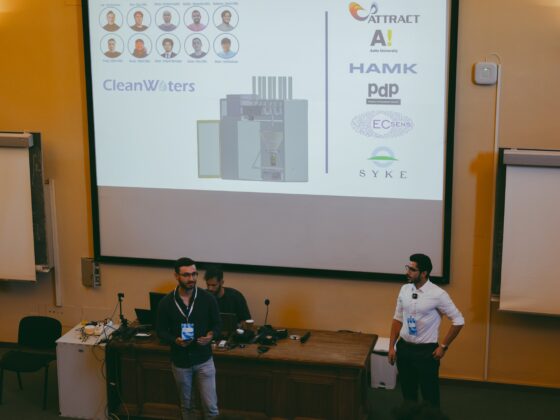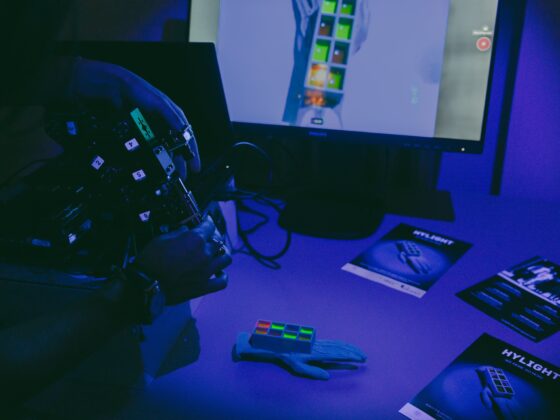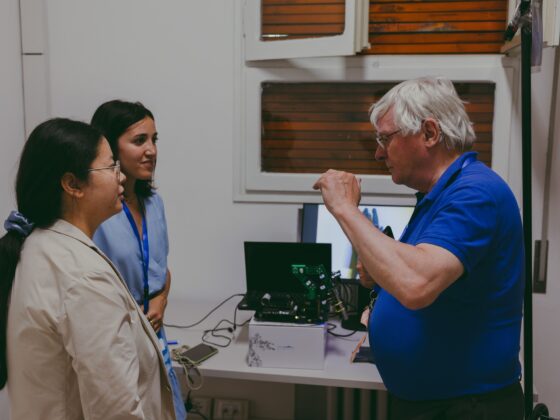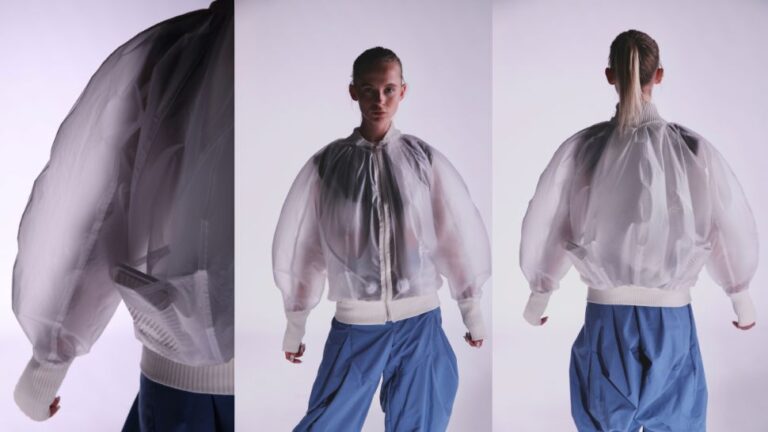On June 16th, ATTRACT Academy hosted the Student Expo 23, an open event held at the University of Bologna whose purpose was to showcase the projects done by master’s students who worked in different multidisciplinary teams during the first two rounds of the Student Programs (SP).
During this event, more than 40 students from different educational institutions like Aalto University, Esade, PACE University, and the University of Bologna, among many others, had the opportunity to present their problem-solving journey and the prototypes they developed between 2022 and the first semester of 2023. Furthermore, they could attend the talks of experts based on the impact of tech on society, how to come up with new ideas, etc.
The idea of the Student Expo 23 was to inspire the next generation of trainers to learn more about student experiences as well as to provide young innovators and entrepreneurs with valuable feedback.
“We are glad to have been able to provide this platform to celebrate the work done by the students, who are at the very core of what we do at the ATTRACT Academy. The student projects explore societal applications for ATTRACT technologies in new domains, and seeing their excellent outcomes reinforces our belief that integrated initiatives like ATTRACT have the capability to build a robust innovation ecosystem in Europe”, explained Shreyasi Kar, Head of Operations at Aalto University Design Factory.
These were some of the student projects that were presented:
- Hareva project (Student program “Base“): Students worked with ATTRACT-funded project H3D-VisionAIR to develop a headgear that enhances the real-time vision of surgeons during operations. They designed a prototype mount that can be adapted to different helmets and can be connected to the prototype lamp to the head system. The stem is rotatable independently from the visor. The universal junction can be attached to the light following GoPro standards.
- BeeMo project (Student program “SGI“): Students presented a project which imagines how beekeeping practices could be developed for a more resilient industry. Climate change affects beekeeping worldwide and results in two serious problems for honeybees– climate fluctuations and increasing pest infestations. The beekeepers are trying their best to keep their colonies alive with traditional methods. Unfortunately, these methods require a lot of guessing and cannot keep up with modern times. Working with ATTRACT technology META-HILIGHT, the students came up with an innovative solution that can be implemented in the existing beehives and help tackle both of these challenges.
- Team TumorDeTech (Student program “CBI4AI”): Students worked on a project which revolutionizes cancer research by enabling labs worldwide to study tumour growth in a standardized manner, facilitating data sharing to build the largest open algorithm for predicting tumour growth. They used the technologies of POSICS-2 and Random Power to process information among researchers and eliminate the need for animal testing in cancer research.
- LUMO project (Student program “CBI-FP”): Students presented a project to face the need of making cancer treatment follow-up more accessible in rural areas. They used the technologies of POSICS-2 together with a transport service for radiotracers and proposed an imaging system to monitor the evolution of tumours with a manually operated probe, similar to an echography imaging system.
- Filter2Less project (Student program “TeSI”): Students presented an intelligent filter for washing machines that allows not only to filter microplastics but to measure them. It is done with Glassomer technology, making it fully recyclable and transparent.
- AURIEL project (Student program “CBI A3”): Students presented a project which would improve safety for pedestrians at NYC intersections through visual and audio-based traffic alerts. They used the ATTRACT technologies of HYGER and h-cube in addition to some other technologies from CERN.
- Process-Eye project (Student program “CBI-ATTRACT”): Students presented a project that uses the technologies of PIPe4.0 to scan the gas composition inside a column and that send the information to a server. An advantage of this is that PiPe4.0 gets gas, makes the analysis and gives it back without any modification and without taking a sample.
- CRESCENDO project (Student program “FTSF”): This project proposes a new method for colouring fabrics and clothing that is sustainable and can be made accessible for all. By isolating the colour molecule and then injecting it into a cotton seed it would be able to grow pre-dyed cotton fibres.
It should be noted that this event was part of the three-day Trainers workshop, which brought together teachers, trainers and R&D&I researchers who are currently participating within the ATTRACT ecosystem to discuss good practices and celebrate success and experiments with the aim of providing a platform for them to better plan the courses for next year.
More information about the Student Programs is available here.
